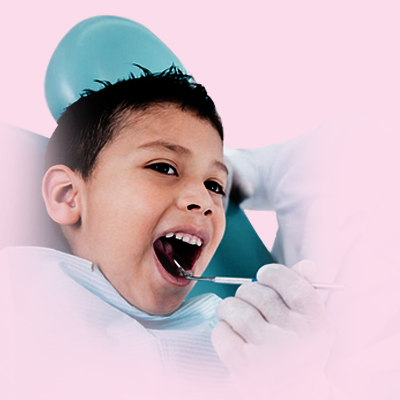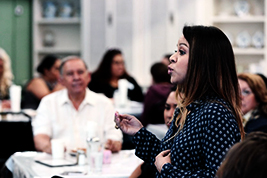{{t.docname}}
{{t.testdescription |htmlToPlaintext}}
CDCs are dental clinic certified as Child Dental Centres under the aegis of Child Dental Foundation (CDF) which conduct oral health screening a must for Healthy Teeth for a Lifetime.

We assess caries risk by scanning and detecting white spot lesions(precursors to cavities), dental neglect, physical abuse and malocclusion in order to reduce suffering, and saving teeth through prevention, education, support and research.
Indian Dental Association (IDA) initiative CDF was introduced because in India dental caries has a prevalence as high as 60-80% in children, a figure far more than asthma. Apart from this, about 30% of children suffer from malaligned teeth and jaws affecting proper functioning of the dento-facial apparatus.
Read More
Presently there are 464 successful CDCs in India, functioning in various states. IDA plans to set up 5,000 such Centres in the near future. This will provide a better outreach and accessibility to patients.


Let’s share success stories, opportunities to integrate oral health improvement into service specification and an effective programme of delivery for zero to 19-year-olds.
Did you know that your 'baby' or ‘milk' teeth usually start to appear when the child is around 6 months old. All 20 baby teeth should appear by the age of 2. All children are different and develop at different rates.
Did you know that primary teeth are not “just baby\milk teeth.” These are important as space maintainers for permanent teeth and in development of speech, mastication, esthetics and psychological well being.
Did you know that the spacing between children’s baby teeth is important because it allows enough room for the bigger, permanent teeth.
Did you know that primary teeth have thinner enamel and appear whiter (translucent/almost bluish) than permanent teeth.
Did you know that disease progresses more quickly in primary teeth.
Did you know that premature and low birth weight babies can have delayed primary tooth eruption and enamel defects, putting them at higher risk for decay.
Did you know that children can be comforted during the normal eruption process by chewing on a cold teething ring or teething toys.
Did you know that you should take your children to the dentist regularly, beginning with the eruption of the first tooth. Then, the dentist will recommend a specific program of brushing, flossing, and other treatments for you to supervise and teach children. These home treatments, when added to regular dental visits and a balanced diet, will help give your child a lifetime of healthy habits.
Did you know that if your child damages a tooth, you should contact your dentist straight away. A damaged tooth will often discolour over time.
Did you know that early childhood caries (ECC) is a transmissible infectious process that affects children younger than 5 years and results in severe decay and tooth destruction.
Did you know that early childhood caries (ECC) is caused by a child staying on the bottle, breastfeeding or sippee cup too long.
Did you know that not to nurse your children to sleep. Nor should you put them to bed with a bottle of milk, juice or formula. When a child is sleeping, any liquid that remains in the mouth can support the bacteria that produce acid and harm the teeth. A simple pacifier or bottle of water is fine.
Did you know that permanent teeth are normally yellower than primary teeth, but they appear even more so because you are comparing them with the lighter baby teeth still in the mouth.
IDA recommends the assessment of infants, by a dentist, within 6 months of the eruption of the first tooth or by one year of age
Brushing should be recommended from the time the first tooth appears. It must be undertaken twice daily – in the morning after breakfast and in the night before going to bed.

Indian Dental Association (IDA) is the national voice for dentistry, aims “to promote the science and art of dentistry and the betterment of public oral health” through effective communication, guidance and thoughtful legislative efforts. We are dedicated to serving the interests of our members and promoting oral health.